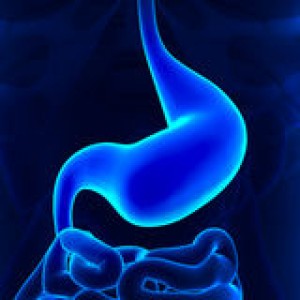News
Scientists explain how LGG works
20 Apr 2015In recent years, research into the benefits of gut bacteria has exploded. Scientists across the globe are examining how these microbes can help improve health and prevent disease. One of the most well-known of these is Lactobacillus rhamnosus GG (LGG). This strain of bacteria, which is part of many popular probiotic products, has a reputation […]

 In recent years, research into the benefits of gut bacteria has exploded. Scientists across the globe are examining how these microbes can help improve health and prevent disease.
In recent years, research into the benefits of gut bacteria has exploded. Scientists across the globe are examining how these microbes can help improve health and prevent disease.
One of the most well-known of these is Lactobacillus rhamnosus GG (LGG). This strain of bacteria, which is part of many popular probiotic products, has a reputation as a helpful microbe. Researchers have found evidence that it can help with intestinal problems, respiratory infections and some skin disorders. Some research suggests that it may even help with weight loss.
But a key question has remained unanswered: How does LGG actually produce benefits?
Now, researchers at the University of Maryland School of Medicine (UM SOM) have come up with an explanation. It appears that LGG may act as a facilitator, modifying the activity of other gut bacteria. This is said to be the first time this mechanism has been described; the discovery could eventually help scientists create more effective strategies to foster a healthy gut. The paper was published in the latest issue of the journal mBio.
Claire M. Fraser, professor of medicine at the UM SOM, as well as director of the Institute for Genome Sciences, studied the effect of LGG on a group of elderly subjects.
“This species of bacteria has a reputation for being really useful to humans,” she said. “So we wanted to better understand how it might work in the human intestine.”
She and her collaborator, Dr. Patricia Hibberd at Massachusetts General Hospital, tested 12 subjects, who ingested LGG twice a day for 28 days. She analysed gut bacteria before and after this regimen, and found that ingesting LGG led to increases in several genes that foster several species of gut bacteria, including Bacteroides, Eubacterium, Faecalibacterium, Bifidobacterium and Streptococcus. These microbes have been shown to have a range of benefits in humans, including the promotion of a healthy immune system. (Fraser notes that LGG may also have direct effects, in addition to its ability to modify the overall ecosystem.)
“This is a new idea, that some probiotics may work by affecting the overall ecosystem of the gut,” said Fraser. “Previously we tended to think that LGG and other probiotics worked directly on the host. I think this finding has many exciting implications.” For one, Fraser says, it lends support to the idea that we need to look at the microbes in the gut as an interconnected ecosystem rather than a series of solitary bacteria. Modifying the behaviour of microbes already in the gut may be just as important as adding any single species to this population.
Fraser and her colleagues used an innovative method for enumerating gut bacteria; this approach, known as metagenomic analysis, allows for a much more comprehensive view of what the microbes are actually doing in a given person’s intestines. Previous methods do not provide nearly the same level of detail as this method.
“Dr. Fraser’s study is not only fascinating, but it will help advance a rapidly emerging research area,” said Dean E. Albert Reece, who is also the vice president for Medical Affairs, University of Maryland, and the John Z. and Akiko K. Bowers Distinguished Professor and Dean of the School of Medicine. “In coming years, scientists will learn a great deal about the microbes that exist within us. I’m sure that Prof. Fraser, the Institute and the School of Medicine will be deeply involved in these trailblazing efforts.”
The research was funded by the National Institutes of Health.
